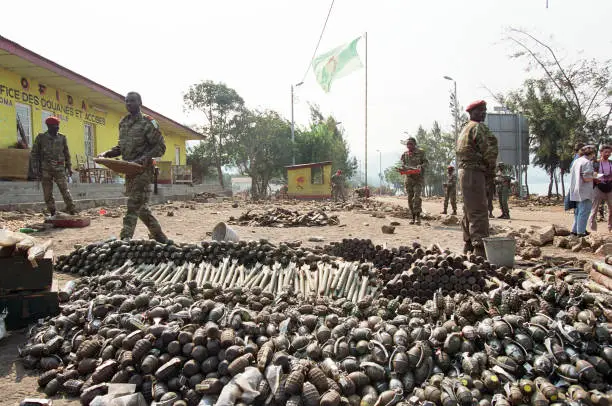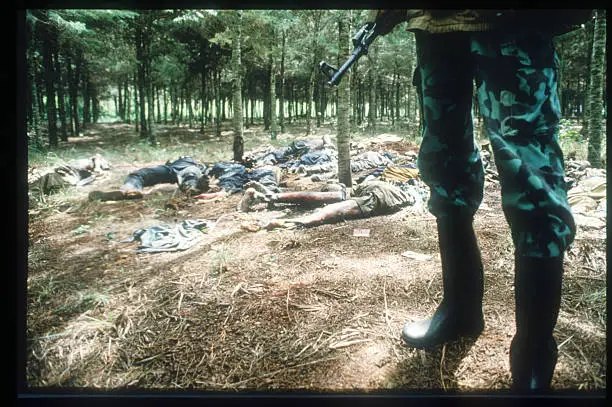The Tutsi Tragedy: A Painful History Unfolded
The Tutsi Massacre, also known as the Rwandan Genocide, was one of the most horrific incidents of mass killing in history. From April to July 1994, an estimated 800,000 Tutsi and moderate Hutus were systematically murdered in Rwanda. The massacre was a result of longstanding ethnic tensions between the Tutsi and Hutu communities, fueled by political and economic power struggles. In this article, we will explore the events leading up to the Tutsi Massacre, its devastating consequences, and the ongoing efforts to achieve justice and reconciliation in Rwanda.

Scenes in Rwanda following the civil war, 30th July 1994.
The Roots of Ethnic Tensions
The Tutsi and Hutu communities have lived together in Rwanda for centuries, but colonial rule by Belgium in the early 20th century exacerbated ethnic tensions. The Belgians favored the Tutsi minority, who were seen as more European in appearance and more socially and politically sophisticated. Tutsis were given preferential treatment in education, employment, and government positions, which furthered the divide between the two communities.
In 1959, the Hutu majority overthrew the Tutsi monarchy, sparking a wave of violence that forced many Tutsis to flee to neighboring countries. In 1990, Tutsi exiles formed the Rwandan Patriotic Front (RPF) and launched a guerrilla war against the Hutu-dominated government. A ceasefire was reached in 1993, and the Arusha Accords were signed. That aimed to establish a power-sharing government between the Hutus and Tutsis.
The Massacre
On April 6, 1994, the Hutu president of Rwanda, Juvénal Habyarimana, was killed when his plane was shot down. Hutu extremists used the event as a pretext to launch a campaign of mass killing against the Tutsi population. The Rwandan military, along with Hutu militias known as Interahamwe and Impuzamugambi, targeted Tutsis and moderate Hutus, using machetes, guns, and other weapons. The killing was often brutal and indiscriminate, with entire families and communities slaughtered.

Skeletal remains were strewn on the grounds of the Catholic mission on May 5, 1994, in Rukara, Rwanda. Hundreds of Tutsis were killed at the Rukara Catholic mission in April 1994 in one of the worst massacres of the Rwandan violence.
The international community was slow to respond, with the United Nations (UN) failing to provide adequate support for the UN peacekeeping force in Rwanda. The United States, France, and Belgium also failed to intervene, despite their knowledge of the violence taking place. By the time the RPF captured Kigali, the capital of Rwanda, on July 4, 1994, an estimated 800,000 people had been killed in just 100 days.
Consequences and Ongoing Efforts
The Tutsi Massacre had a devastating impact on Rwanda, both in terms of human lives lost and the long-term social and economic consequences. The country was left with a traumatized population and a shattered infrastructure. Many of those responsible for the killings fled to neighboring countries, while others were arrested and tried for their crimes. The International Criminal Tribunal for Rwanda was established in 1994 to prosecute those responsible for the genocide, and many individuals have been convicted for their role in the violence.
In addition to legal justice, Rwanda has also focused on the process of reconciliation and healing. The government has implemented several initiatives to promote unity and tolerance, including education programs and community-based reconciliation projects. The Gacaca courts were established to provide a forum for truth-telling and justice at the community level, allowing survivors to confront those responsible for the violence and facilitating the reintegration of perpetrators back into society.
The aftermath and reconciliation efforts
The Tutsi Massacre was a tragic event in Rwanda’s history that left a lasting impact on the country and the world. It was a culmination of years of tension and animosity between the Hutu and Tutsi ethnic groups, fueled by colonization, propaganda, and political manipulation. The lack of international intervention and support during the genocide was a devastating failure for the global community.
However, Rwanda has made remarkable strides in healing and rebuilding since the genocide. The government’s emphasis on unity and reconciliation has led to the formation of community courts. The Gacaca courts were designed to bring justice and accountability at a grassroots level. Additionally, education initiatives, such as the promotion of the Kinyarwanda language and the national curriculum’s inclusion of genocide education, have contributed to rebuilding a shared national identity and a culture of peace.